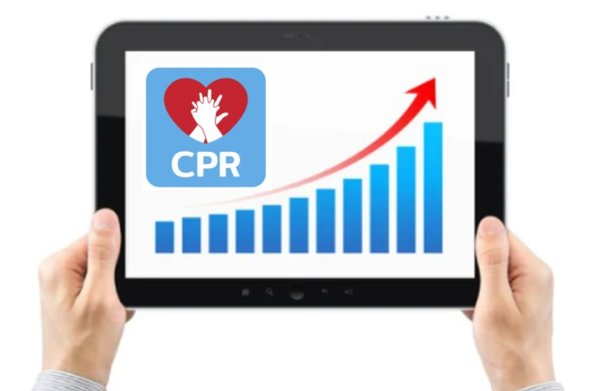Many niche publishers are assessing their print magazines as media budgets and ad dollars shrink this year. But you may be missing out on revenue opportunities by cutting issues or closing up entirely. Read on for five evaluation tactics from Erin Peterson, owner at Capstone Communications. This article was first published in Pages magazine, published by Lane Press. See Part One here. – Editors
*****
As organizations look to slash budgets in this difficult time, one line item in many communications offices is getting particular scrutiny: the print magazine.
It’s no secret why. The costs of printing and mailing can add up quickly. And unlike gauging social media by clicks and likes and shares, measuring the effectiveness of print magazines can be tough. As our screen time skyrockets, it may seem wise just to meet people where they are.
But the reality may be more complex — and ripe with opportunity. Before making cuts to your print magazine, you might ask: Have you done the work to maximize its potential?
If your print magazine is on thin ice, or if you just want to make sure you’re squeezing the most value out of every page, consider these tactics. They’ll amp up your publication’s value to your readers — and your organization. (See Tactics #1 & #2 here!)
3. Give the people what they want.
I’m always surprised when I learn that editors don’t want to deliver the one thing that their readers want in their publication.
In the case of alumni magazines, that “thing” readers want is class notes. A nationwide survey of alumni magazine readers by the Council for Advancement and Support of Education found that two-thirds of magazine recipients read the class notes from the magazine, far outpacing engagement with stories about faculty, student events, and donors. In a survey I did of alumni from one small college, a full 84 percent wished there were more class notes in their magazine.
Still, most editors I talk to want to find ways to minimize or eliminate that section entirely. They hate how difficult these sections are to assemble, fact-check, and design. They hate that a single misspelling can invoke ceaseless fury from their audience. The pages require a painstaking attention to detail that most editors would rather devote to their feature well.
But the most successful editors I’ve seen find ways to go big with the sections their readers love most. The HBS Alumni Bulletin, the alumni magazine for Harvard Business School, collects a full 450 pages of class notes for every issue — that’s as long as a Steinbeck novel every quarter. It’s an intense, time-consuming process, but Director of Alumni Communications Bill Weber says it’s worth it. He says he suspects if the school ever tried to cut back on class notes, “It would be World War III.”
Class notes may not be relevant to your publication, but you probably already know what section your readers would like to see you maximize. Maybe they love before-and-after stories or case studies or photo essays.
Maybe there’s a reason it all seems too hard to tackle.
It’s probably not. Don’t work harder to deliver what you want to deliver. Work harder at delivering what your readers want.
4. Make your request.
Many magazine editors that I work with shy away from using their publications for soliciting gifts and donations. “Our readers already get enough solicitations,” say some. “We want this to feel separate from advancement and development,” say others.
If there was ever a time to ditch this philosophy to try something new, this might be it. While many are hurting right now, there are others who are itching to help out — but they want to make sure their support is going to an organization they love and trust.
There’s no reason not to make it extremely easy for them to give through your magazine. A blow-in or bind-in envelope with a gift request is a simple addition worth testing. One client I worked with told me they consistently receive between $20,000 and $30,000 with each issue that contained a giving envelope. At a school I worked at years ago, the alumni annual fund office was happy to pay for an envelope that went into the magazine. The envelope came with a message telling readers that they could use it to submit class notes, donations, or both. We got plenty of class notes from the effort. And while the annual fund team never shared their numbers with us, they never once complained about the price. They continued the practice for years.
Your magazine will remind people exactly how valuable you are in their lives, and a giving envelope makes it simple for them to give back to support your work.
5. Track the numbers you can track — then improve them.
Many of the editors I speak with do very little measurement to determine whether their magazines are making an impact.
But there’s plenty you can measure and improve over time. In alumni magazines, engagement can be measured in letters to the editor, class notes submissions, and responses to nostalgia prompts.
A few editors I know send out simple, five-question surveys to several hundred readers after every single issue. They’ll often hear from about 100 respondents. Perhaps not enough for statistical significance, but enough to gauge the temperature of the readership. Some of the most valuable information they get from readers comes from the open-ended questions they ask at the end, in which respondents frequently suggest excellent story ideas, articulate a surprising insight, or offer a meaningful testimonial that can remind editors and their teams that the work they do really does make a difference.
As many organizations take a harder look at their communications and their costs, there’s no doubt that print magazines will get scrutiny. But with the right adjustments, you might be able to make your magazine your organization’s superpower.
*******
More about Erin: Erin Peterson is the owner of Capstone Communications, a Minneapolis based company. They provide editorial and consulting services to help colleges and universities make the most of their alumni magazines. To get a five-page research report on building a case for your print magazine, email peterson@pagesthemagazine.com. This article was first published in Pages magazine, published by Lane Press.
*********
Niche Media has the best events, education, and training in media! Our super niched-out events & content give target-audience publishers in the Consumer, hobbyist, B2B, city & regional, and association markets the tools they need to build revenue, audience, and more.




